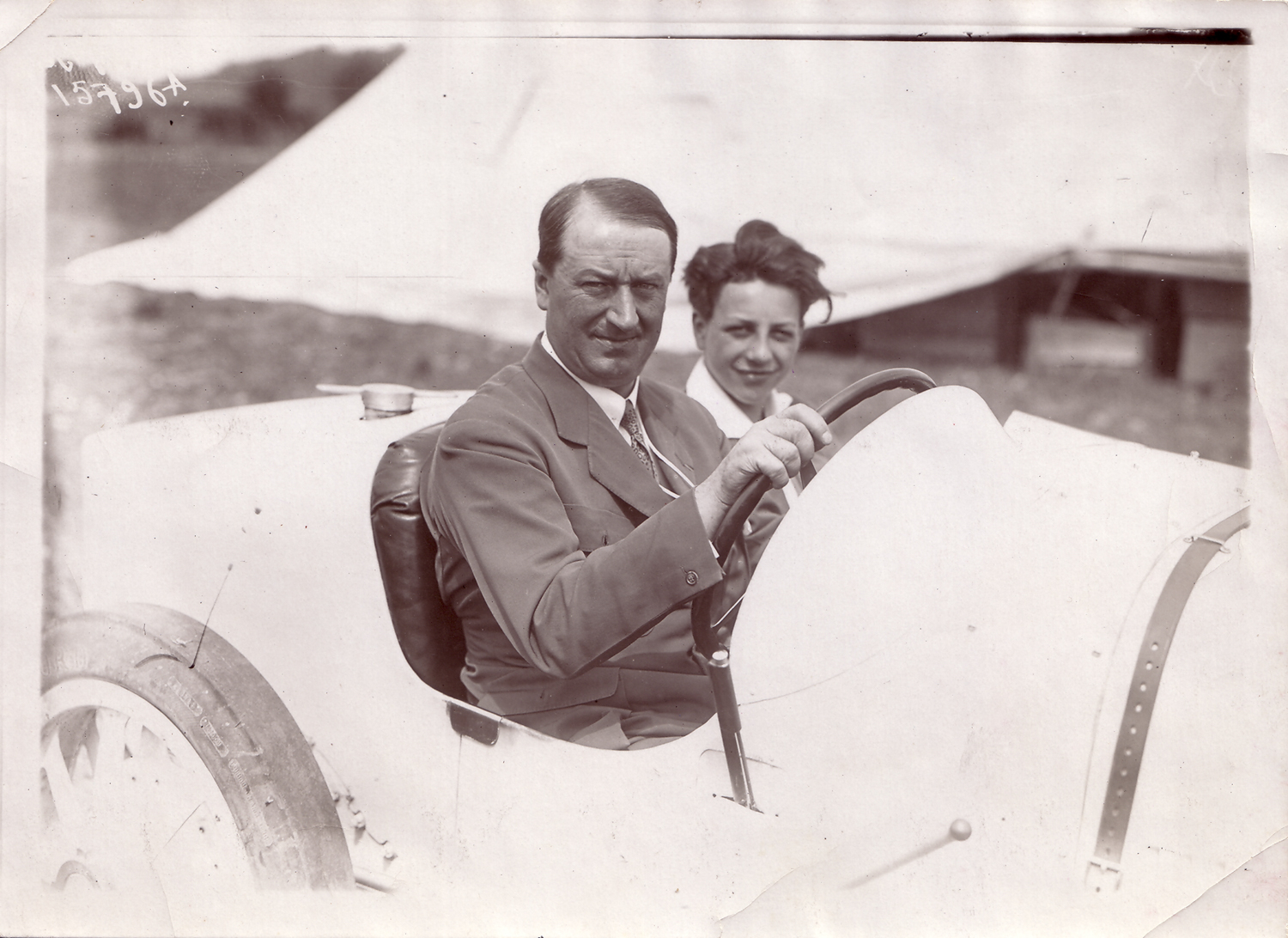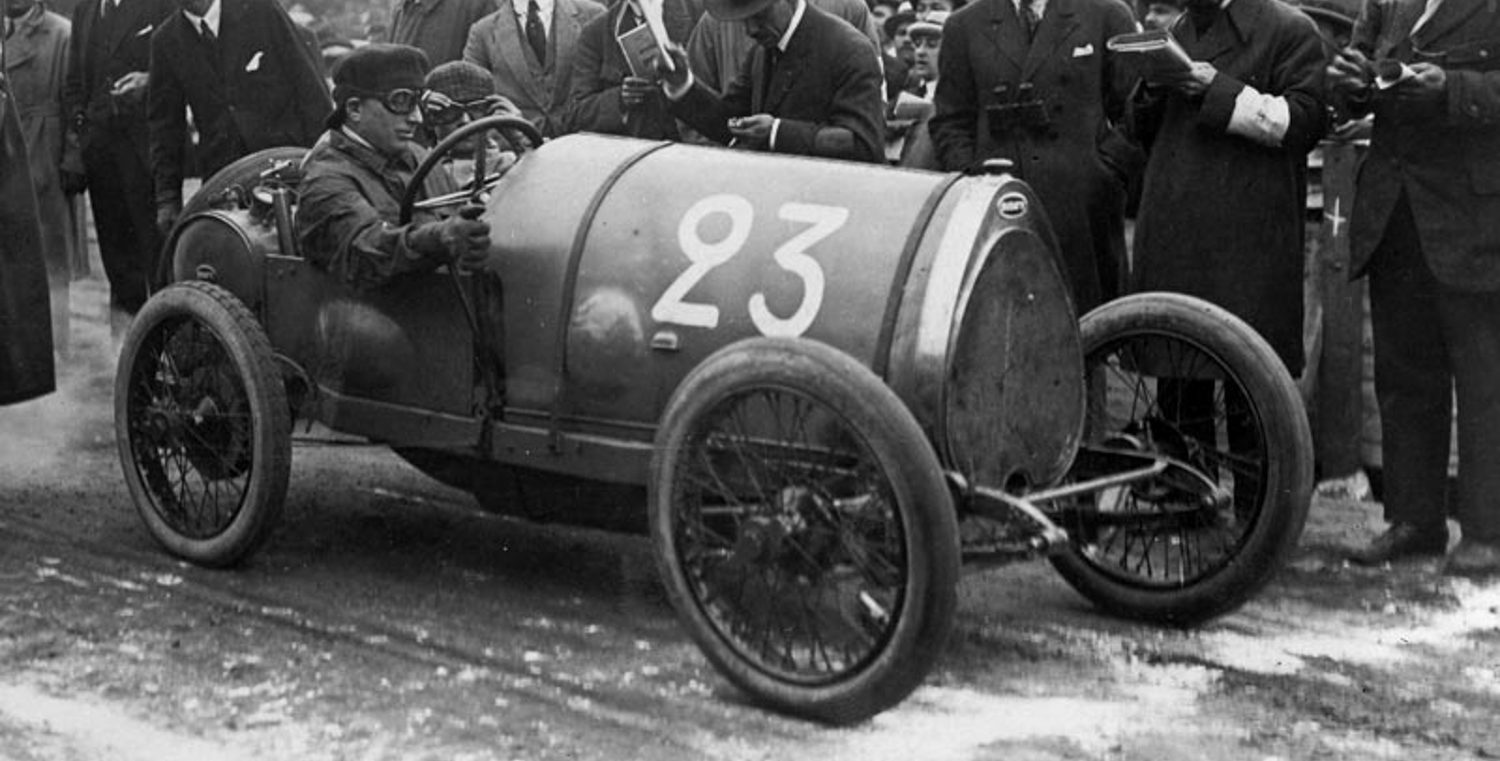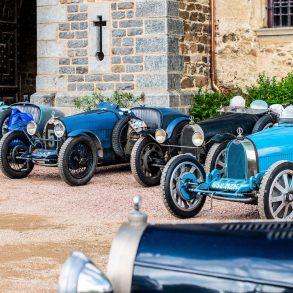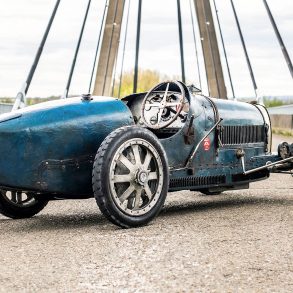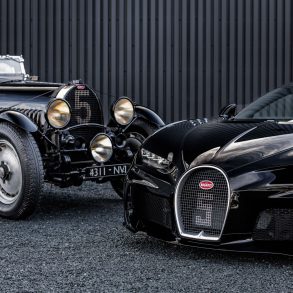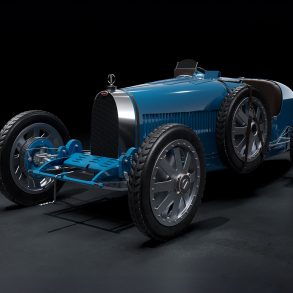A radiator in the shape of a horseshoe and a bright blue finish – everytime one of the striking Bugatti vehicles took its place at the starting line of a race in the 1920s, the spectators could be sure of one thing : This car was going to take the lead. The Type 13, and later the Type 35, cast the foundation for exceptional performance vehicles from Molsheim around 100 years ago. In addition to that, they become true racing legends.
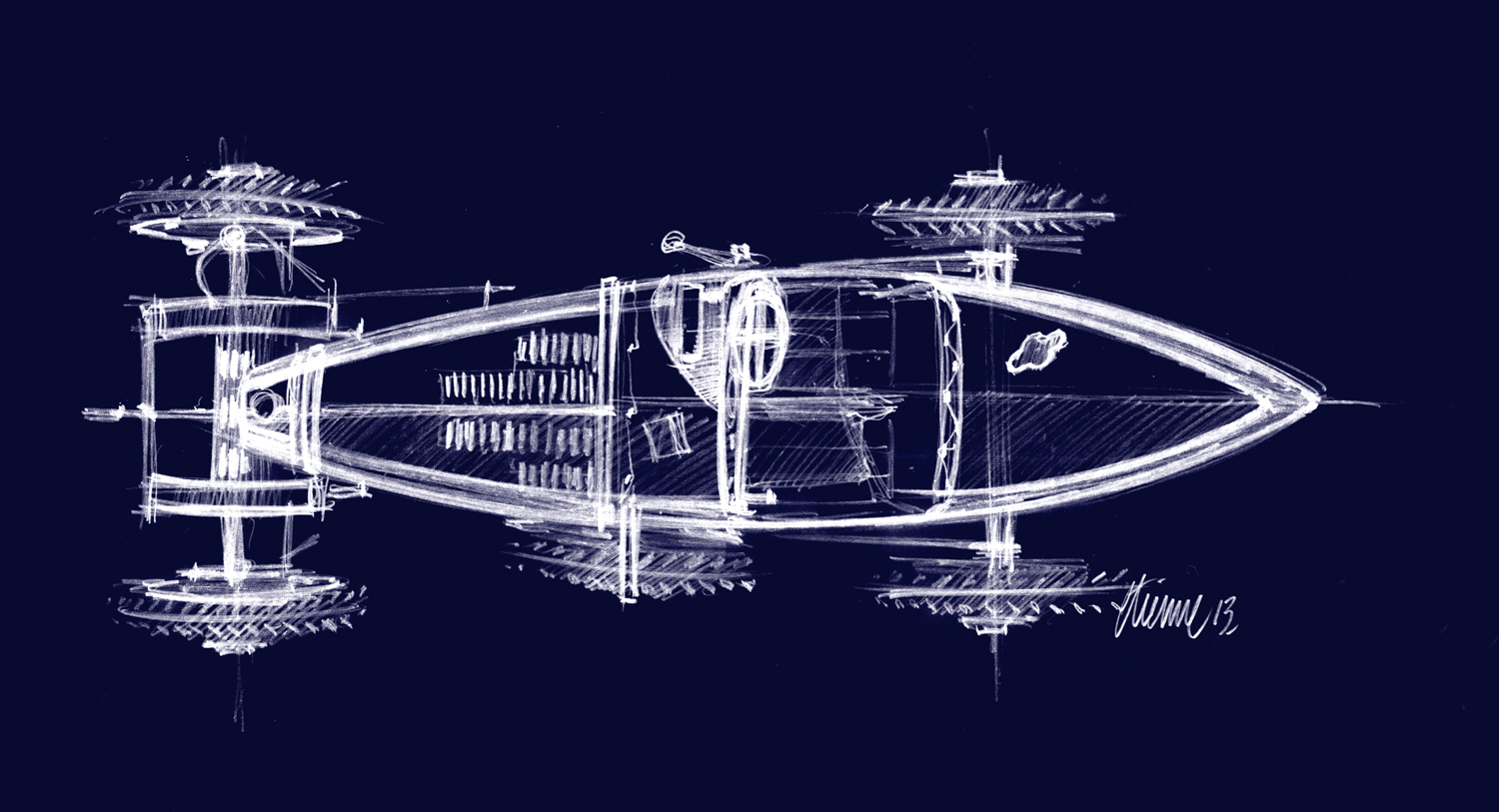
For Bugatti, the 1920s represent a time of pure victory in almost all competitions taking place at the time and that is not exclusive to those on special race tracks. The light and strong vehicles from Molsheim were superior to their competitors – and therefore mostly unbeatable – especially on the hard road and mountain races with their tight bends, bad surface, potholes, sand and whirling stones.
Strong and light – the Type 13
As early as 1911, the Type 13 finished second at the France Grand Prix. The combination of a light and agile body with a strong and reliable engine was new at the time. After World War I, Bugatti was only able to resume production in 1919. First with the well-known Type 13, but clearly much more refined, since Bugatti used the production-free period to continue improving the technology. The previous 1.3-liter, four-cylinder had been given a four-valve cylinder head for faster and better gas throughput. This makes the Type 13 one of the first cars with four-valve technology. One hundred years ago, white metal for crankshaft bearings and pistons was just as new as a gasoline pump and a pump that sprayed oil on selected components. From 1920, two spark plugs per combustion chamber ignited the mixture more quickly in the four-cylinder racing version, with the sparking energy coming from two magnetos.
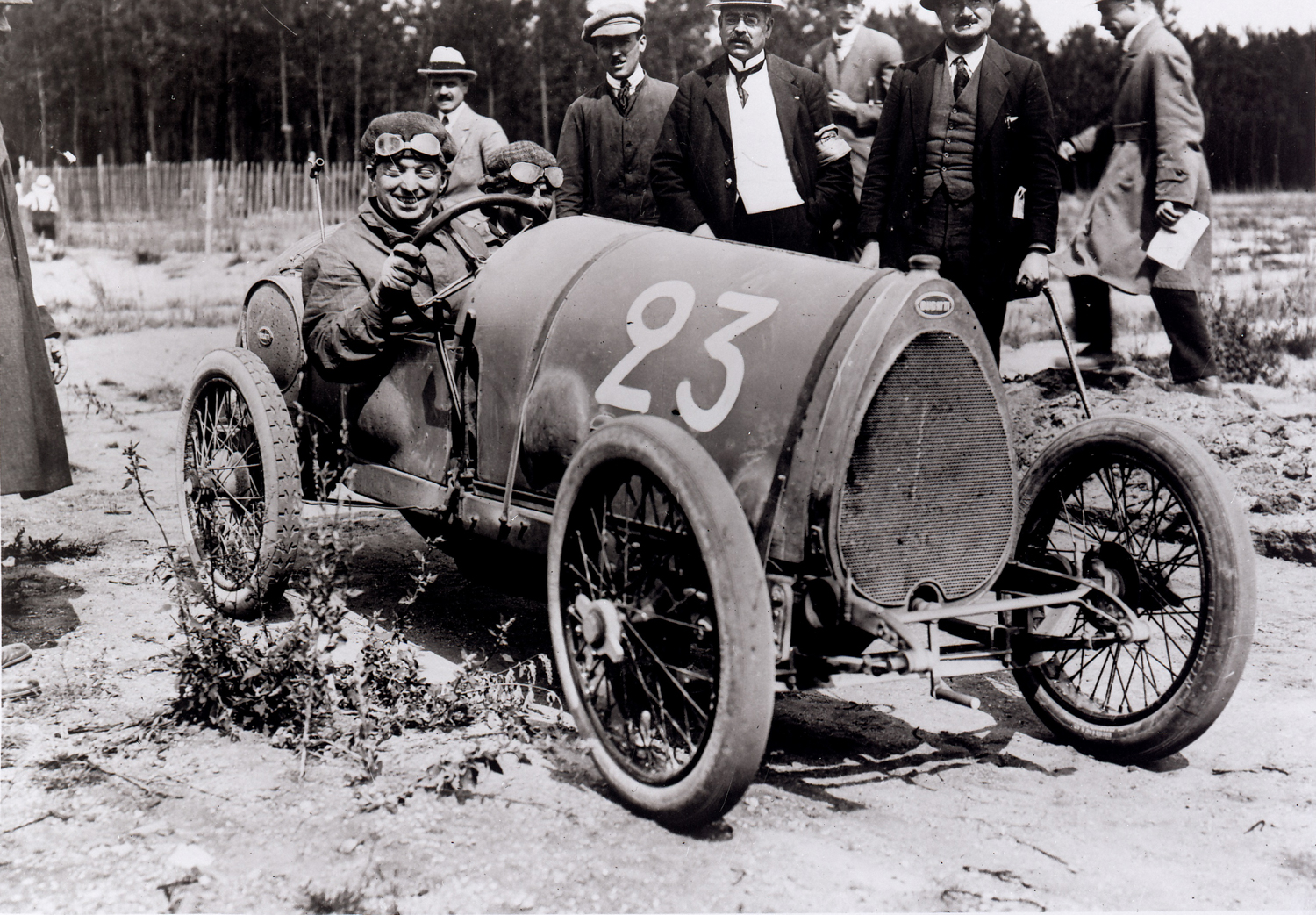
The Type 13 took first place in its first major assignment, the Voiturettes class (light racing car) race at the French Grand Prix, at Le Mans – with a 20-minute lead over the runner-up. The small, high-performance car quickly became popular – with both racing drivers and spectators. A year later, the volume of the Type 13 engine was just under 1.5 liters and its output increased up to 50 hp. In addition to the increased power, the engine’s low weight of less than 40 kilograms also played a role: the Type 13 drove reliably, allowed ease and speed of maneuver around the bends, especially in races on public roads with the often poor pavement.
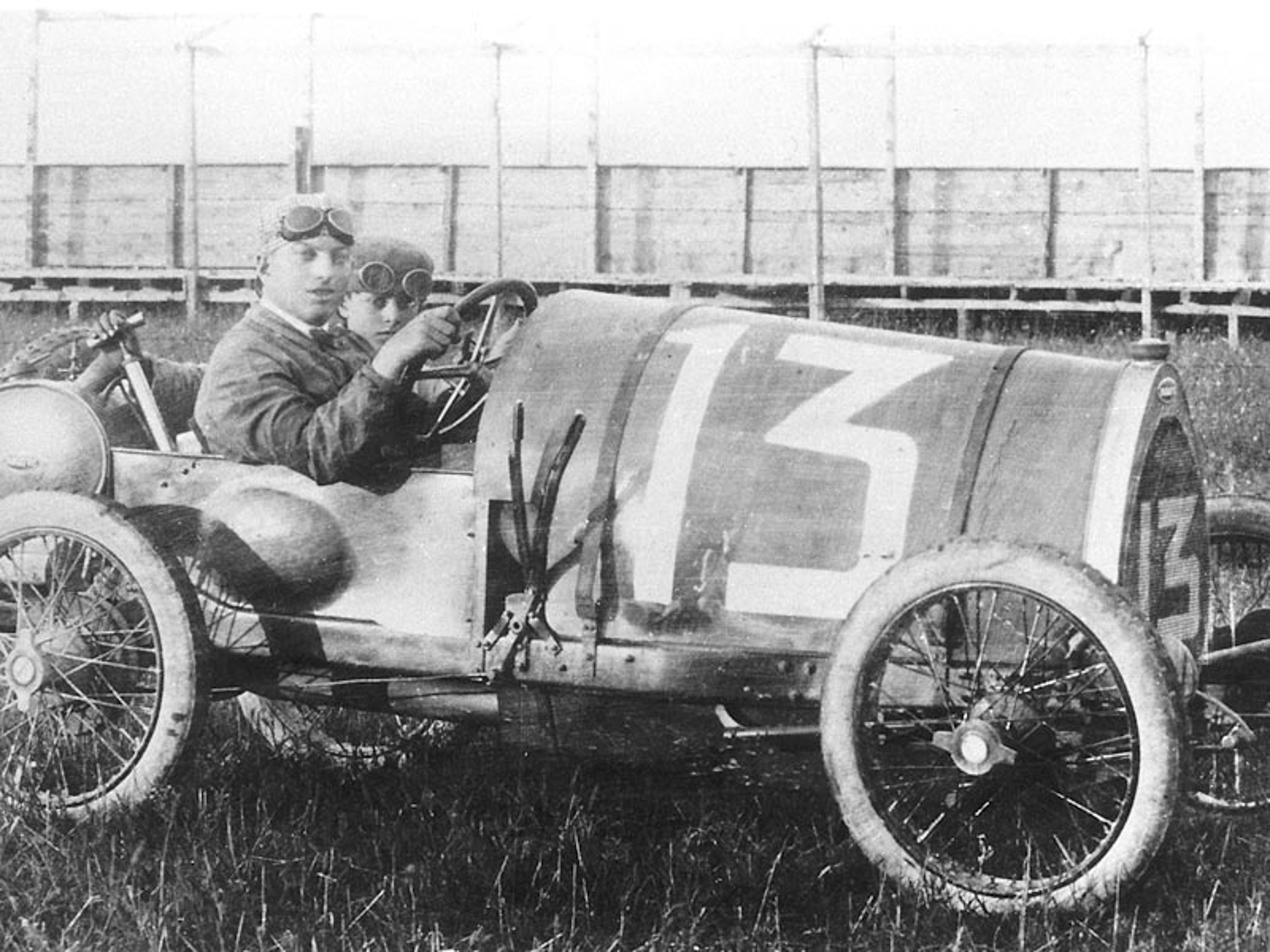
The Type 13 won races on Lake Garda, mountain races on Mont Angel near Monte Carlo, South Harting, Limonest near Lyon and La Turbie near Nice. Bugatti successfully modified the general concept of the Type 13 with different body lengths, calling the resulting variations Type 15, Type 17, Type 22 and Type 23.
The car’s performance in Brescia is still famous to this day: in 1921 the Type 13 took the first four places in the Grand Prix of the Voiturettes and cemented its unbeatable status. Its surname is therefore to this day: Brescia. All subsequent four-valve vehicles now bear this name.
A Masterpiece of Technology – the Type 35
It was from 1924 onwards that the Bugatti Type 35 caused a worldwide sensation. With the newly designed sports car, the powerful eight-cylinder engine, the sophisticated front axle and the light aluminum wheels, Bugatti was to dominate race tracks worldwide in the coming years. No matter whether on circuits or road races: the Bugatti Type 35 is considered a technical masterpiece, and nearly impossible to be beaten.
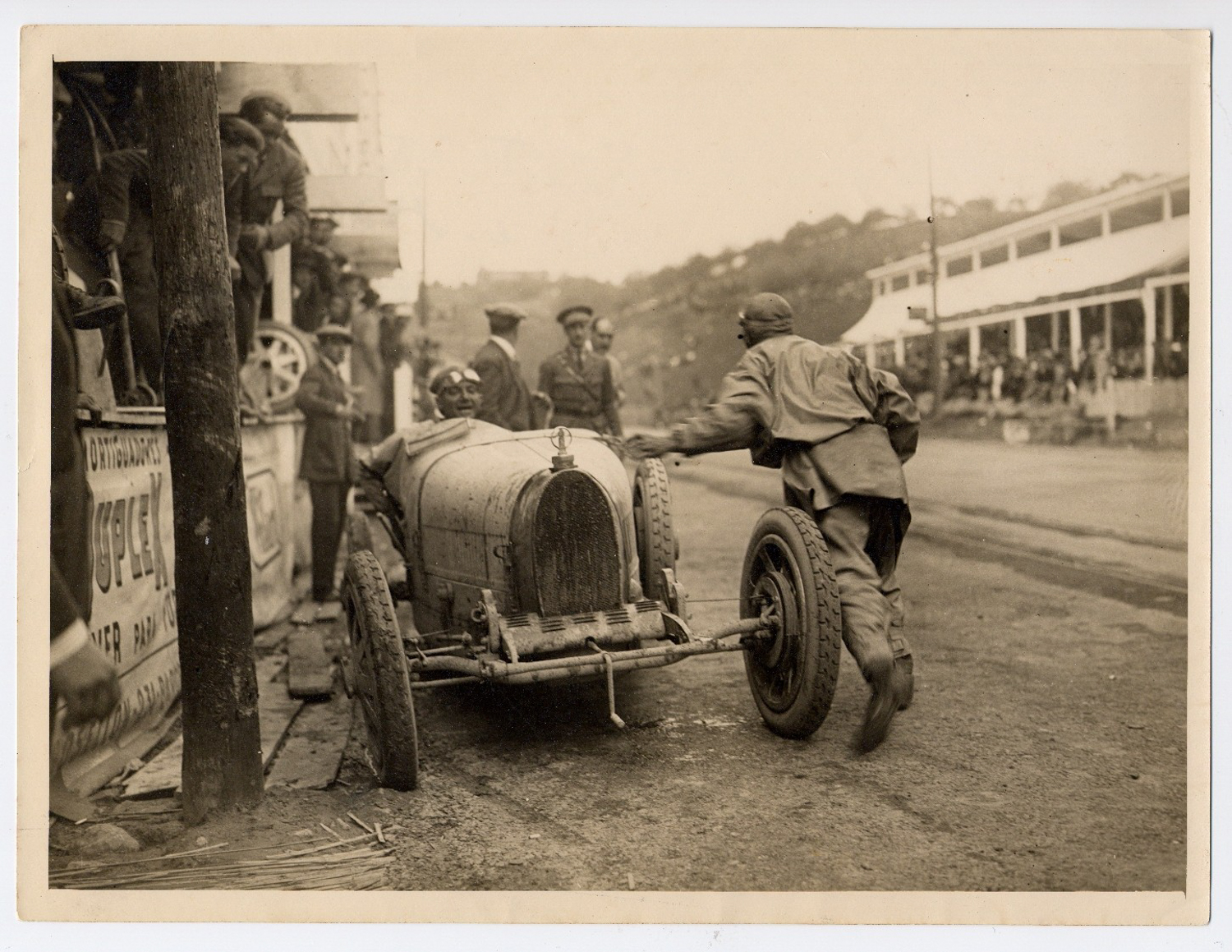
For the first time, a double roller-bearing and triple ball-bearing crank set-up was used, which allowed the 8-cylinder engine to rotate at up to 6000 rpm. Thanks to two, instead of one carburetor, the output of the initially 2.0-liter engine increased to up to 95 hp, with the power being transmitted via a wet multi-plate clutch. The first Type 35 drove faster than 190 km/h and easily passed all its competitors. In the later evolution model, the Type 35 B (with 2.3-liter, eight-cylinder and supercharger) the power increased to up to 140 hp and the top speed to over 215 km/h. In 1924, Bugatti used the Type 35 in mountain races such as the one in Gometz-le-Châtel near Paris, where the open sports car demonstrated its power by being the first to race to the finish line, leaving all the other participants behind. Its elegant lines also make it one of the most beautiful racing cars of the era.

The Type 35 entered the Targa Florio race in Sicily for the first time in 1925 and immediately scored a victory. Four more times, variants of the Type 35 notched up victories in this long-distance race on public mountain roads. It was the toughest and most notorious street race in the world. Overall, the Type 35 won around 2,000 races by the early 1930s, making it arguably the most successful racing car ever. Ettore Bugatti therefore called his creation the “forefather of a breed of thoroughbred racing horses from Molsheim – a real thoroughbred.”
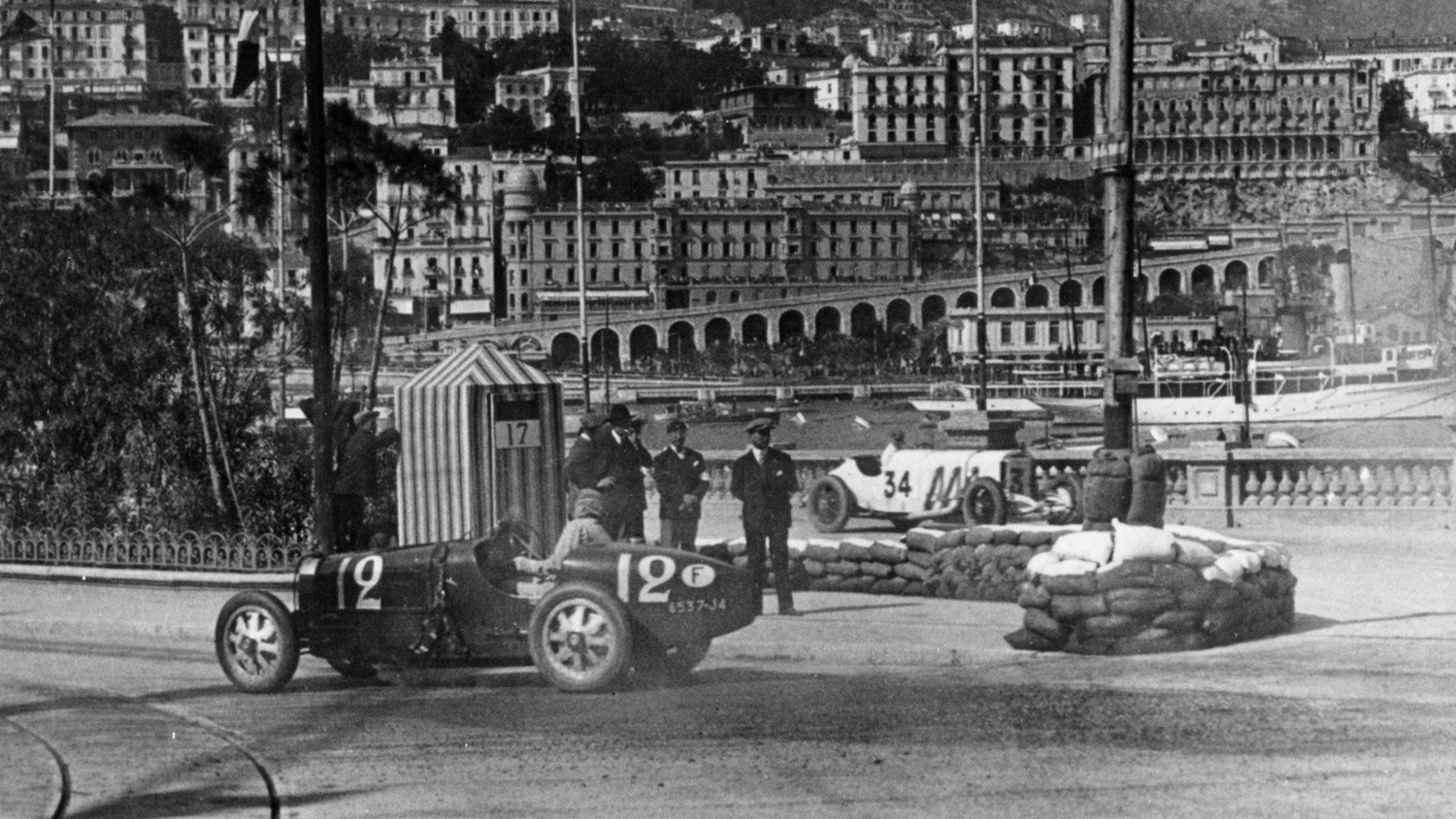
“It is not just the high performance that have always characterized Bugatti vehicles, but also the high reliability, durability and ease of driving”, explains Stephan Winkelmann, president of Bugatti. “Not only experienced racing drivers immediately feel comfortable in a Bugatti, but also ambitious sports drivers. The simplification of exceptional technology, paired with luxury and ease of use still characterizes us today.”
